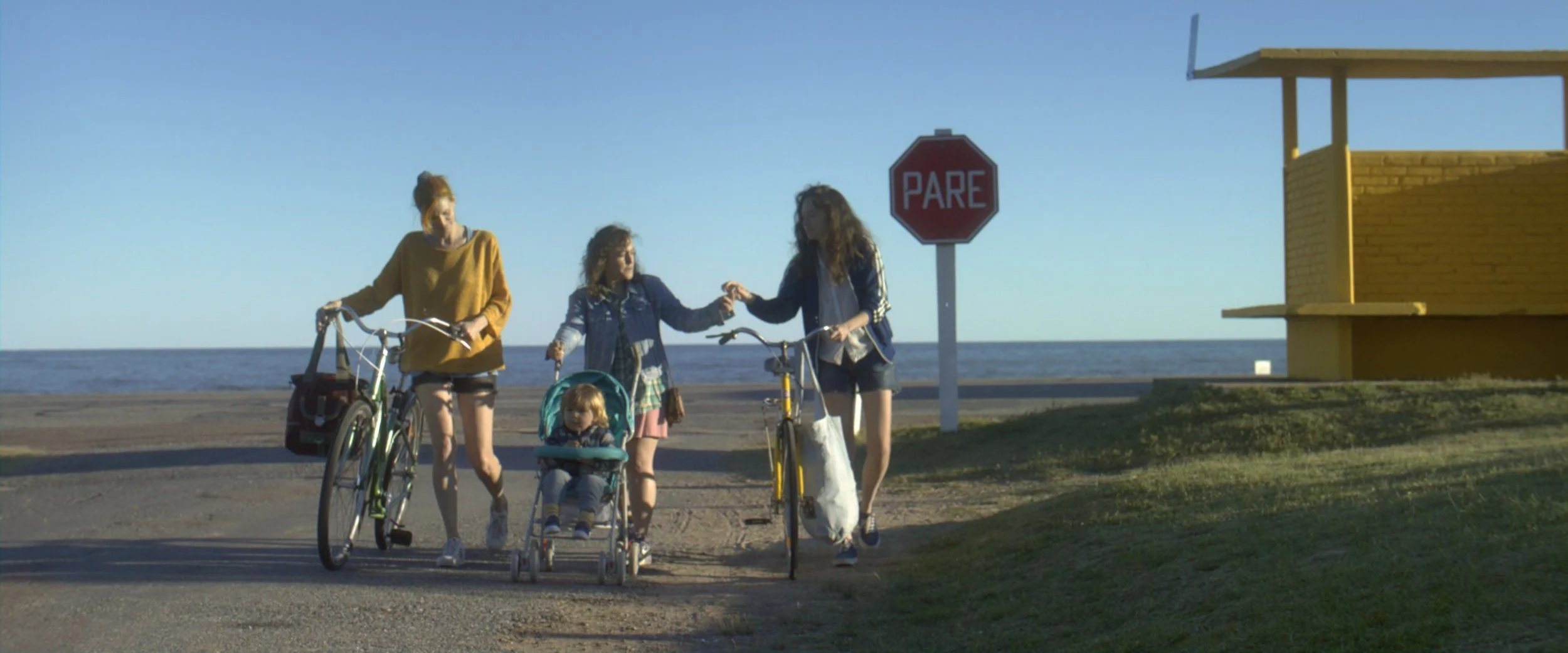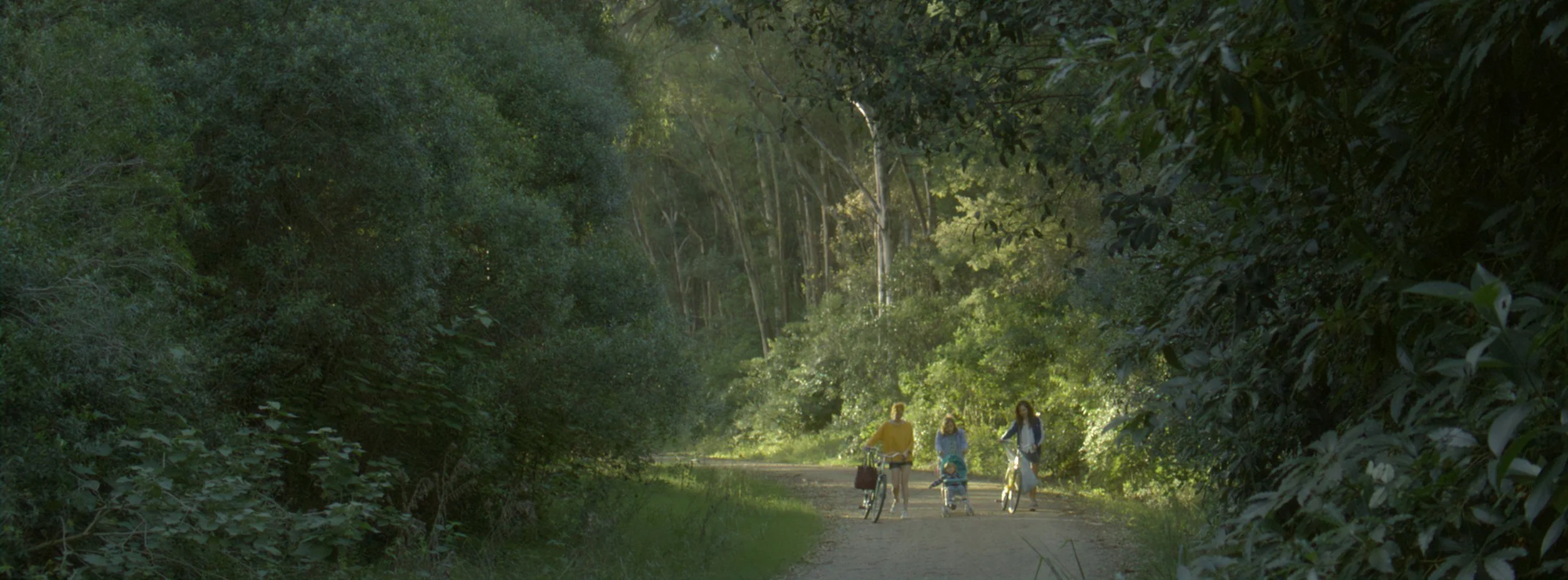By Camilla Marchese
Don't You Let Me Go / Agarrame fuerte directed by the duo Ana Guevara and Leticia Jorge, is having its world premiere in the International Narrative Competition at the Tribeca Festival. This film marks their third collaboration with producer Agustina Chiarino and her production company, Bocacha Films, following their acclaimed 2013 debut feature So Much Water / Tanta agua (co-directed by both) and the 2019 comedy Alelí (directed by Jorge and written by both).
In Don't You Let Me Go, the filmmakers dissect the unexpected treasure of friendship, tackling this universal topic in a humane, authentic, and subtle manner. The film follows Adela in the wake of her best friend’s death as she embarks on a journey through time to a distant autumn, where her friend eagerly awaits along with detective novels and the warmth of a crackling fire. In a tale of timeless sisterhood and celebration of life, Adela must confront her grief and unravel the mysteries that bind them together.
I spoke with the filmmakers ahead of their world premiere to discuss female friendships, the mystical representation of grief, and what this weekend between three friends can teach us about longing and human connections.
How did the concept of the film come about and what inspired you to tell this story?
Ana Guevara: The process of writing and producing the film came together very quickly, inspired by the loss of a close friend. It was a situation that affected us in an impactful way, and it was almost inevitable to try to channel these feelings through a story that later became this one.
Leticia Jorge: It also has to do with the fact that Ana [Guevara] and I are friends and work partners. Our relationship is rooted in that, in sharing the work and in the very loving relationship that we have had for many years. So in the face of that sadness we both experienced, we did what we do best, and made a movie.
Going off from what you just mentioned, what was the process of interweaving a personal event with surrealist aspects of the plot?
LJ: Through the film we gave back to Adela, the protagonist, the possibility of being with Helena, her friend who had passed away. Then we didn't want to take that away from her.
In other words, starting from the first act of the film, which has a more realistic tone, where what you see is what is happening, it is inevitable that this will switch. Adela doesn't use time travel in a way in which she tries to change anything. We found a way in which she could stay with her friend and spend more time together in that surreal space and time in the later acts of the story.
But of course, the fact that it had a more surreal ending, wouldn't have made much sense if the rest of the movie didn't incorporate surrealist aspects as well. So we started to look for these mechanisms, to show how time moves differently and how our protagonist moves in these spaces, and to do that we also had to play with certain cinematic tricks. Now you see me, now you don't style.
These aspects were used to sow the idea that Adela is in a world where these things can happen. On the other hand, it was also a way that was both playful and poetic. Even if what happens has a naturalistic tone, it has those irruptions that expose that it is not rooted in reality. Notes on the escapism of reality add to the dream-like state that characterizes the second part of the film.
And this escape from reality is also reflected in the fable/story structure of the film, especially through the use of intertitles. Could you tell us how this is used to show the protagonist ‘telling a story within a story’?
LJ: The film is constructed in three acts, and the fable aspect of it was important for us. It was our way of saying ‘Well, this is based on our very strong emotional experience, but the movie is a movie—it's a story. Adela is a character and the things that are happening can be read as a story that has three differentiated parts.’ It is a movie that is very conscious of being a movie, it doesn't try to disguise the process of the construction of the narrative. It is thought of as a fable and constructed that way. We also rely on this to create a distance between us and the story.
AG: There’s also this aspect, perhaps unconscious, of reaffirming that by it being a film, a story, it is not ephemeral like real life. It is a way of preservation. That's our gift to the protagonist.
The story tells, at its core, the perseverance of friendship. In very subtle ways and without an extensive backstory, you craft strong character dynamics between these three friends. Could you talk about your process of crafting these dynamics and showing the complexity of their friendship with minimal exposition?
AG: Drawing inspiration from everyday life gestures is very common for us. Leti and I have known each other for many years. We are very close, both on a personal level and on a professional level, because we share a sensitivity in relation to how we see people, how we like to talk about the ties between people, and how to write about those little moments. In this film precisely, those little moments between our characters don't explain anything about their relationship. It was through everyday gestures and how we like to talk about moments of everyday life that we decided to explain their friendship. We always like to say that two people who love each other a lot are two people who can go hours without talking, looking at the sky and reading a little book, just enjoying each other’s company. For us, explaining a close bond between characters is through small experiences in everyday life. The less you explain a relationship the less it needs to be explained.
LJ: Just as Ana says, when drafting the story we look for those moments where we can show their dynamic in an observational way. In the moments with dialogue, their conversations don't explain their backstory, but by watching them interact, perhaps talking about the most random topic, we can get a sense of their bond, of their connection.
Another way in which you show their interactions in the time travel sequences is how the characters fall into more childlike energy when being together, somewhat like reconnecting with their ‘inner child.’ Could you talk about this and how it deepens their dynamic?
AG: All those things that you just mentioned are rooted in their dynamics. But they are also used to show that they have traveled to a moment that is not the ‘present’ and that it is noticeable that time has passed in some way. That has to do with the fact that losing someone has not only to do with the reality that the person is no longer there, but also that there is a moment in life that goes on, that will no longer be the same. Life goes on but it’ll be different, there are moments that are frozen in time, in memory.
Then also the type of people they are when they are 30 years of age shows their prolonged childhood. Before everything that happened—before becoming parents, and creating their own families—they were still in this intermittent adulthood without any real responsibilities. Therefore, the film rescues this moment, in the time travel sequence, to preserve that peak of friendship before it shifts, due to life changes.
LJ: Also, something that happened to us when shooting the film was that we also returned to that state of youthful friendship, because we left together, without our families and children, for a long time to work on this film. We returned to that moment, of course in a very mediated way since we were making a movie, so in a way, we mirrored that reconnection with youthfulness in our friendship that our characters go through.





